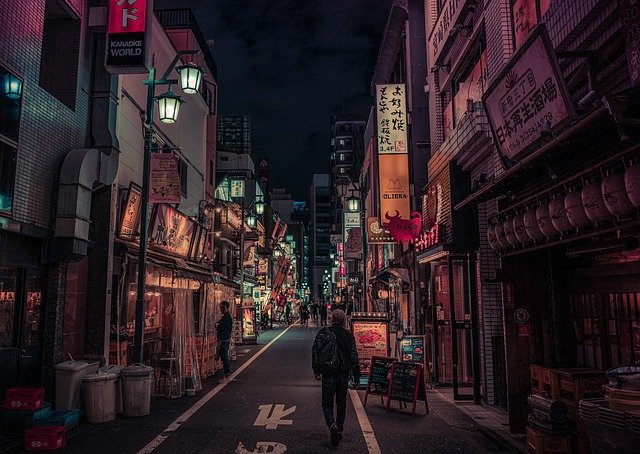Japanese Paradox: Privilege of the New Lifestyle Despite Criticism of COVID Response
The Japanese public have been outspoken in its criticism of their Prime Minister and his cabinet, paying specific attention to the country’s response to the COVID-19 pandemic. A poll conducted by Mainichi Shimbun in April saw Prime Minister Abe’s approval rating drop to a record 27 percent, highlighting the dissatisfaction of his constituents.
Yet as many other countries continue to fight an overwhelming wave of COVID-19 cases, most of Japan is now enjoying what has been dubbed the new lifestyle – or the new normal as it is called in other places.
What is the new lifestyle?
In April, the government declared a nationwide state of emergency. While it was not as strict as the lockdowns implemented in most other countries, the declaration proved to be effective in curbing the spread of the coronavirus. This paved the way for Prime Minister Abe to lift the restrictions towards the end of May, several days earlier than planned. At this point, daily new infections had become minimal, healthcare resources were freed up.
He announced the end of the state of emergency in a press conference, where he also used the term new lifestyle.
“The Japanese way of dealing with the epidemic has been quite superior…Now, we are going to venture into a new arena. Therefore, we need to create a new lifestyle from now on. We need to change our way of thinking,” he said.
The Expert Panel of the Japanese Government gives practical examples of the new lifestyle:
- Maintaining the social distancing
- Wearing a face mask
- Handwashing
To be more specific:
- Maintain the 2M (minimum 1M) distance between individuals.
- Choose outdoor activities over the indoor activities for your pastime.
- Refrain from directly facing a person when speaking with someone if possible.
- Wear a face mask when outing, staying indoors, and speaking with others even if you don’t have any symptoms.
- Upon returning back home, immediately wash your hands and face, change clothes, or take a shower.
- Wash your hands thoroughly with soap and water for about 30 seconds. (You may use a hand sanitizer)
Businesses, restaurants, and even some entertainment venues have reopened. Domestic travel is now allowed. Telework is given as an option – with added subsidies – even if some people may go to the office if they want. Some are even moving to rural regions while maintaining their jobs.
Following these guidelines, the Japanese people can now go about their daily lives, albeit with some changes to their behavior.
While we are seeing a proliferation of videos of people throwing tantrums about wearing masks and social distancing from the west, in Japan, they are embracing the new lifestyle.
As such, the tanking of Prime Minister Abe’s approval ratings in April is perplexing.
The dichotomy between ratings and results
Professor of Political Science (and Director, Centre for the Study of Global Japan, Munk School of Global Affairs & Public Policy, University of Toronto) Phillip Y. Lipscy sheds some light on the matter.
He took to social media and analyzed the “Japanese conundrum”, which places the Prime Minister’s approval ratings and the outcome measures in Japan side by side.
On the one hand, the majority of the Japanese population believes that their Prime Minister bungled the response to COVID-19. On the other hand, Japan only has a fraction of COVID-related deaths compared to other countries, which have been hit hard, such as the United States and Italy. Compared to its peers which have been rated highly in terms of COVID response (South Korea, New Zealand, and Singapore), Japan’s mortality rates are at par.
According to Lipscy, Japan’s success can be attributed to its early response and its tactics such as contact-tracing and the avoidance of high-risk interactions. Ironically, this same quick response that led to success is also a source of dissatisfaction (on the citizens’ part). Because of the early response, Japan has been “off-cycle” as compared to other OECD countries. As such, when other countries were only beginning to implement hard lockdowns, the Japanese people were already suffering from lockdown fatigue (though the measures were still less stringent). This, in turn, led to complacency and a slight resurgence in COVID cases.
It was to be expected as the pandemic is cyclical in nature. Being off-cycle, Japan was in a unique situation, and being compared to its peers gave an impression of inadequate response when in fact, the opposite was true – as COVID-related numbers consistently showed. As a matter of fact, the very recent increase in the approval rating of the Japanese Cabinet – now up to 36 percent – supports Lipscy’s analysis.
There was a gap between perception and reality. But, as time showed, reality won out. The Japanese people are now enjoying the privilege of living the new lifestyle while other nations continue to engage in a raging battle against the virus.
Feature Image by Philippsaal from Pixabay

